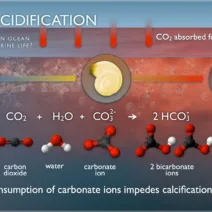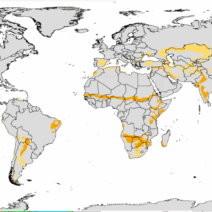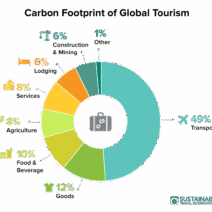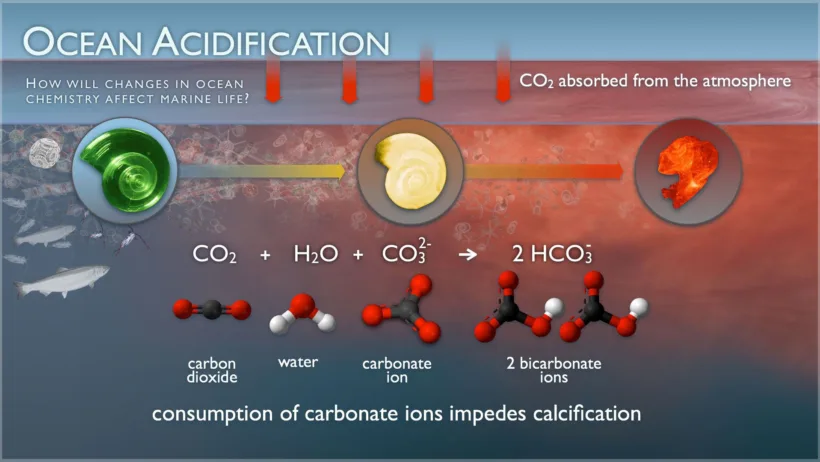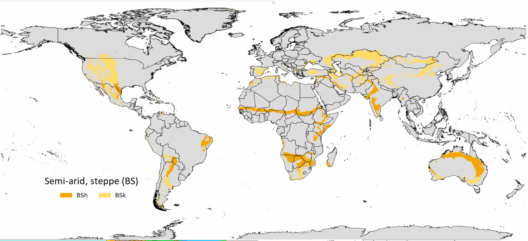In the intricate tapestry of our planet’s ecosystems, the oceans stand as vast reservoirs of life, supporting myriad species while playing a critical role in regulating our climate. However, a silent crisis has been brewing beneath the surface: ocean acidification. This phenomenon, a direct consequence of anthropogenic climate change, warrants a close examination. To fully appreciate the gravity of ocean acidification, one must delve into its causes, impacts, and the intricate connection it shares with global warming.
Ocean acidification occurs when carbon dioxide (CO2) is absorbed by seawater, leading to a series of chemical reactions that decrease the pH of the water. This process has accelerated dramatically since the Industrial Revolution, primarily due to the burning of fossil fuels—a principle driver of climate change. The oceans absorb approximately 30% of the CO2 emitted into the atmosphere, which, while buffering the impacts of climate change, simultaneously transforms aquatic environments into more acidic conditions.
The initial consequence of rising CO2 levels is the alteration of carbonate chemistry. As CO2 dissolves, it forms carbonic acid. This reduction in pH directly influences the availability of carbonate ions, vital for calcifying organisms such as coral reefs, mollusks, and certain types of plankton. These organisms rely on carbonate ions to create and maintain their calcium carbonate structures. The implications for marine biodiversity are profound, as these foundational species are pivotal to the broader food web.
Research has shown that elevated acidification levels can hinder the growth of coral reefs, crucial ecosystems that provide habitat and food to countless marine organisms. Coral bleaching events, exacerbated by rising ocean temperatures and acidification, have devastating consequences, leading to the decline of reef systems. Coral reefs are not only biodiversity hotspots but also essential buffers against coastal erosion and storm surges. Thus, their degradation poses significant risks to coastal communities.
Yet, the impacts of ocean acidification extend beyond the mere physicality of marine species. Biologically, there is an emergent concern regarding species behavior and ecological interactions. For instance, fish are known to rely on sensory cues from their environments to evade predators and find suitable habitats. Studies indicate that increased acidity may disrupt these sensory modalities, potentially leading to increased mortality rates among juvenile fish. Such changes threaten not only marine populations but also the livelihoods of millions reliant on fisheries for sustenance and economic activity.
The interplay between ocean acidification and climate change is intricately linked to global carbon cycles. The oceans have served as a carbon sink, absorbing excess CO2 and thereby mitigating atmospheric concentrations. However, as acidification progresses, the ability of oceans to sequester carbon effectively diminishes. This cyclical relationship suggests a feedback loop that could exacerbate climate warming, creating a dire situation where rising temperatures further accelerate ocean acidification.
It is crucial to acknowledge that the ramifications of ocean acidification are not confined to the marine environment; they ripple through terrestrial systems as well. The health of the oceans is inextricably tied to global food security, tourism, and climate resilience. The decline of seafood stocks and the coral-dominated habitats muddles the future of vibrant coastal economies, placing additional strains on communities dependent on these resources.
Mitigating ocean acidification requires a multifaceted approach. Reducing CO2 emissions remains paramount. Transitioning to renewable energy sources, enhancing energy efficiency, and fostering sustainable agricultural practices form the cornerstone of strategies aimed at lowering atmospheric carbon levels. Additionally, protecting and restoring coastal habitats, such as mangroves and salt marshes, can serve as natural buffers, helping to absorb CO2 and protect vulnerable marine ecosystems.
Adaptation strategies are equally essential. Fisheries management must evolve to account for the shifting baselines of marine species, employing dynamic approaches to ensure the sustainability of fish stocks amidst changing ocean conditions. Moreover, investing in research and monitoring programs is critical to understanding the complex biochemical interactions at play, as well as tracking how marine ecosystems respond to acidification over time.
Among the various paradigms, a shift in societal perception regarding ocean health and its interconnectedness with climate change is imperative. Public awareness and education play pivotal roles in fostering advocacy for marine conservation. Initiatives aimed at highlighting the importance of preserving marine ecosystems can inspire collective efforts towards carbon neutrality and sustainable practices.
As the scientific community continues to unveil the far-reaching consequences of ocean acidification, it becomes increasingly clear that this issue should be placed at the forefront of environmental discourse. The interdependence of the oceans and climate change underscores the urgent need for comprehensive action. Both local communities and global entities share responsibility, recognizing that the preservation of marine ecosystems is not merely an environmental issue, but a moral imperative for future generations.
In conclusion, ocean acidification epitomizes a broader narrative that encapsulates the intricate connections between human activity, climate change, and the fragile balance of marine ecosystems. Understanding this phenomenon opens avenues for deeper awareness and proactive measures. As we navigate the challenges of the 21st century, we must collectively engage with the oceans’ plight, propelling societal shifts in behavior and policy to safeguard the blue heart of our planet.
